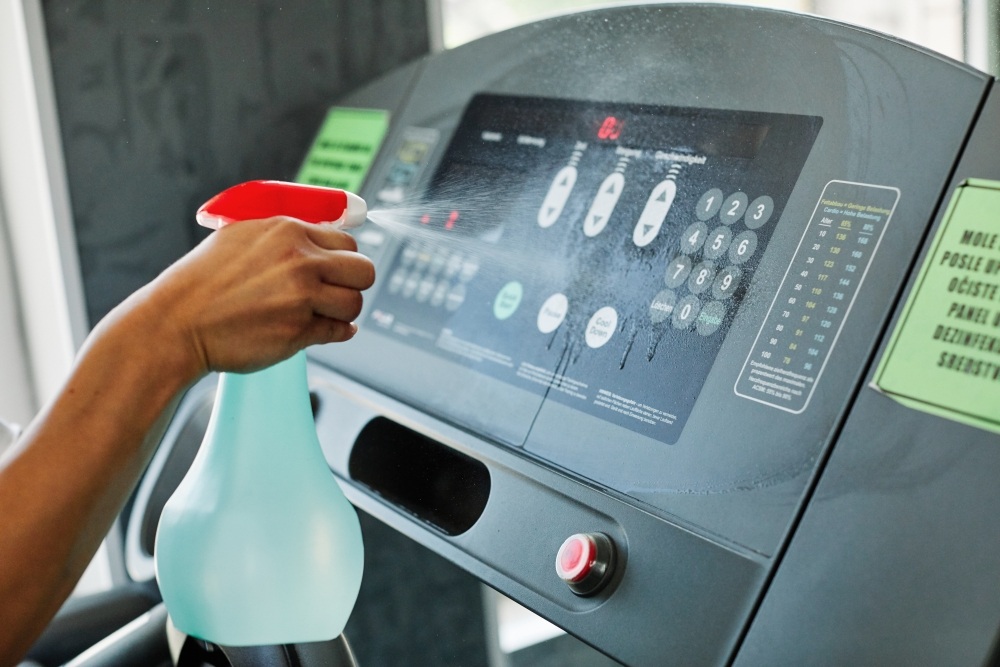Gyms are one of the types of businesses that can thrive in most areas. As long as there isn’t a lot of preexisting competition to deal with, it’s not hard to get a gym up and running and start seeing some profits. There is a lot of work associated with maintenance and improving your member retention, but as long as you’re prepared for those challenges, they shouldn’t be too difficult to overcome.
Are You Ready To Work Your Ass Off to Earn Your Lifestyle?
Are you tired of the daily grind? With a laptop and an internet connection I built a small website to generate income, and my life completely changed. Let me show you exactly how I’ve been doing it for more than 13 years.
That said, are gyms profitable in the end? Many of them are – but your profit margins will depend on factors like how crowded your local market is, how much you invest into new equipment, and whether you take customer reports seriously.
- Are Gyms Really That Profitable?
-
- What Are the Main Costs of Running a Gym?
-
- Rent
- Equipment
- Wages
- Utilities
- Cleaning
- Insurance
- Marketing
- Staff Certifications
- Additional Income Sources to Consider
-
- Specialized Services
- Supplements and Equipment
- Merchandise
- Cross-promotion
- How to Promote a New Gym
-
- Social Media
- Dedicated Website
- Word of Mouth
- What Are the Main Challenges of Running a Gym?
-
- Competition
- Profit Margins
- Legal Issues
- Frequently Asked Questions
-
- Q: How long does it take for a gym to become profitable?
- Q: How do I improve my member retention?
Are Gyms Really That Profitable?
Even though the profit margin of the average gym is around 15-20%, it can be a nice long-term investment that generates a continuous stream of income. You will have a lot of initial work in setting things up, but once you’ve figured out how everything works, you will be able to leave most of the work to employees and only handle the management side of things.
The most important thing to pay attention to is your membership retention rate. The most successful gyms manage to bring in a lot of money because their owners have figured out ways to minimize long-term wear on their equipment while still enticing members to continue their subscriptions. This can be a fine line to walk, and it will take some experimenting to find the sweet spot.
What Are the Main Costs of Running a Gym?
The operating costs of a gym are a mix between investing in equipment, paying employees, and ensuring that everyone is adequately trained. Insurance is also very important for a gym, and you should set aside some money for dealing with legal fees as well. No matter how careful you are, people are eventually going to get hurt and open disputes against you.
Rent
Rent will be one of your main expenses, unless you have significant capital to invest upfront and are okay with purchasing a place directly. Keep in mind that this is a risky idea. Unless you’re absolutely certain that your gym will be successful, you shouldn’t tie yourself to a specific location.
Give yourself a year or two to figure out the long-term prospects of the location and keep renting until then. Expect to pay anything between $1,000 (for a very small gym) to over $10,000 in rent per month.
You may also have to obtain specific permits, especially if you’re planning to offer additional services like selling food and drinks. Gyms can be noisy, so expect some friction with your neighbors if you’re opening yours close to a residential area.
Equipment
Gym equipment is expensive. Not only to purchase, but also to maintain. This is one expense you should never cheap out on and always invest in high-end machines. This is also one of the reasons opening a new gym is seen as a costly venture for most people.
While you can get away with spending less than $100,000 on new equipment for a relatively small gym, your costs will more likely be in the $200,000 – $300,000 range in most cases. Take the time to research the market for gym equipment very carefully. You’ll want to purchase machines that will stand the test of time and will require as little maintenance as possible.
Wages
It’s possible to run a gym by yourself when you’re just starting out. But if it’s anything beyond a tiny garage-style gym, you’ll want to hire at least one or two people to help you out. At the very least, someone should be available at the reception full-time, and you’ll want to have someone cleaning the space regularly.
Finding good gym employees isn’t hard in most areas, as long as you’re prepared to offer an attractive wage. If you can hire someone who’s already worked at another gym, it can be worth listening to their input about how you’re managing things.
Utilities
Cleaning Utilities are another major operating cost for most gyms. Electricity and water are in constant demand in these places, especially if you’re open through the night and offer showers. Estimate around $5 per square foot for both electricity and water combined. This can go up drastically if you offer certain services, like digital kiosks or tanning booths.
Utilities are another major operating cost for most gyms. Electricity and water are in constant demand in these places, especially if you’re open through the night and offer showers. Estimate around $5 per square foot for both electricity and water combined. This can go up drastically if you offer certain services, like digital kiosks or tanning booths.
Along with how well you’re maintaining your machines, the cleanliness of your gym will be one of the most important factors for leaving a good impression on your guests. You should take this seriously, especially in the first few months of running your new gym.
Once word gets out that your gym is unhygienic, attendance rates will start to drop sharply. You can either factor this cost into the wages of your current employees, or hire a dedicated cleaning service.
Insurance
Always get insurance! General liability insurance is a must, at the very least. It’s not expensive at all – in most cases, you can get a good policy for less than $1,000 per year. Legal insurance is another option to consider, as you will eventually start facing various issues on that front. As I mentioned above, no matter how careful you are, accidents can and will happen.
Marketing
Don’t forget to set something aside for promoting your gym! This can be crucial if you want to stand out in a crowded local market. Thankfully, gyms are one type of business that can benefit a lot from word-of-mouth marketing. Do your best to create a good, lasting impression, and it won’t be long before people are lining up to join.
Staff Certifications
This is not strictly necessary, but it can go a long way towards building a respectable image for your gym. If you have certified trainers and nutritionists who can provide qualified advice, this will attract more members, including some more enthusiastic ones who can bring their own crowds with them.
Additional Income Sources to Consider
Memberships will be your main source of income, but you can go beyond that if you want to maximize how much money the business generates. Some of the most successful gyms on the modern market have been able to thrive mostly on ideas like supplements, additional services, and even merchandise.
Specialized Services
Supplements and Equipment From personalized training sessions to rehabilitation, many gyms offer advanced premium services to assist members with specific needs. These usually require some additional investment on your part – mostly in the way of qualified employees and related certifications. You might also need to purchase some extra equipment. If you do it right though, this can easily turn into a major chunk of your overall profits.
From personalized training sessions to rehabilitation, many gyms offer advanced premium services to assist members with specific needs. These usually require some additional investment on your part – mostly in the way of qualified employees and related certifications. You might also need to purchase some extra equipment. If you do it right though, this can easily turn into a major chunk of your overall profits.
Set up a few vending machines for supplements, sports drinks, and other similar consumable items, if you can afford the extra space. Those will not bring in any spectacular profits, but they usually have a bigger profit margin than the main operations of the gym itself. You can also sell equipment and accessories like towels, bands, and anything else that people might need and are prone to forgetting.
Merchandise
Selling merchandise for a freshly opened gym usually doesn’t make much sense. But once things have picked up a little, you should explore this option in as much detail as you can. If your gym is popular enough, people will want to show off their membership. You don’t necessarily have to sell these items directly in your gym, and you can set up an online store to increase the profit potential.
Cross-promotion
Talk to local companies and see if some of them would be willing to strike a deal for cross-promotion. This is very common with large companies that provide extra benefits to their employees. Offering discounted membership plans for your gym is one of the most common ways to go about this. This can also work as an additional marketing channel if you make a good impression on those members.
How to Promote a New Gym
Your first few months might be a bit rough, especially if this is your first time running a gym. Be prepared to start out slowly. You likely won’t see any significant profits for a while, and you might face some unexpected issues during the first year. Having a solid plan for promoting your business is one of the best ways to maximize your potential for long-term success.
Social Media
Social media works great for promoting a gym of any size. Set up a Facebook and Instagram page and start posting relevant content. If you have professional trainers working at your gym, make that known and post an occasional preview of the programs they’ve developed for your members. Engage the community as much as you can. You can also combine this with the point about selling merchandise from above.
Dedicated Website
Always have a dedicated website for your gym. This can allow you to streamline member acquisition and support, and will help strengthen the image of your gym. WordPress and a few optional plugins are all you need to get started, and you don’t need to invest a lot into this when you’re just starting out.
Once your gym has picked up in popularity though, you should definitely consider expanding the website with additional services. In the long run, your website can become a source of income of its own.
Word of Mouth
As I mentioned above, gyms are one of the business types that benefit a lot from proper word-of-mouth marketing. Do as much as you can to encourage your members to talk about your gym. Referral programs can work great for this, as can high-quality merchandise. There are many different options to explore here, and I strongly encourage you to dig deeper into this area.
What Are the Main Challenges of Running a Gym?
Once you’ve learned the basics, you should be able to run your gym with relatively few hassles. That said, there are still some issues you’ll face along the way that you should be prepared for. Especially if you’re planning to open a gym in a large town with a competitive market.
Competition
Gyms are everywhere, and successful ones tend to be pretty resilient. Try to pick an area with higher demand. If a gym has recently closed down, see if you can find out the reasons behind that. Maybe it had nothing to do with the location but just came down to poor management. This is a great opportunity to fill the resulting gap yourself.
Profit Margins
A profit margin of more than 20% is rare for most gyms, and unrealistic for someone who’s just starting out. You should have a lot of money to invest in this operation if you want to be successful, and you should be prepared to deal with relatively slow progress in the first months, perhaps even the first couple of years. As long as you have sufficient financial reserves to carry you through this period, that shouldn’t be a problem.
Legal Issues
Gyms are magnets for liability lawsuits. Even if you’ve done everything in your power to prevent people from hurting themselves, it’s going to happen sooner or later. This makes it important to invest in quality legal insurance and get proper counseling before expanding your business in any way. Don’t panic when you get hit with your first lawsuit. It’s a matter of time before it happens – and once you’ve gone through the process a few times, you won’t be bothered by these incidents that much.
Frequently Asked Questions
Q: How long does it take for a gym to become profitable?
A: Anticipate at least one or two years before you start seeing a proper return on your investment. This depends on various factors, including the size of your gym and its location, but it’s a realistic estimate for most newly opened gyms right now.
Q: How do I improve my member retention?
A: Give your members a channel to voice their concerns and pay active attention to what they’re saying. Address issues immediately, especially when it comes to hygiene and machine maintenance. Try to offer something that other gyms don’t – for example, 24/7 opening hours if you can afford doing that.
What’s up ladies and dudes! Great to finally meet you, and I hope you enjoyed this post. I started my first online business in 2010 promoting computer software and now I help newbies start their own businesses. Sign up for my #1 recommended training course and learn how to start your business for FREE!
I’ve been building profitable affiliate blogs for more than a decade, and built six-figure blogs in a wide variety of niches, including computer software, self help, and home & garden topics. I do things a bit differently, and I hope you like my perspective and my style of teaching.

